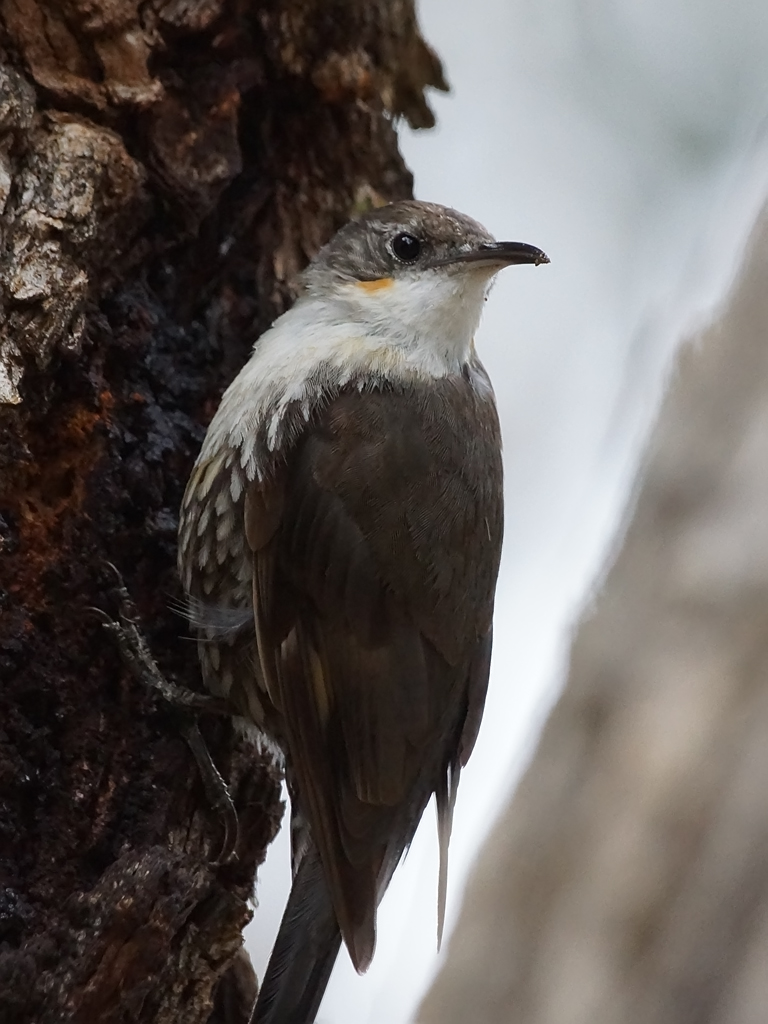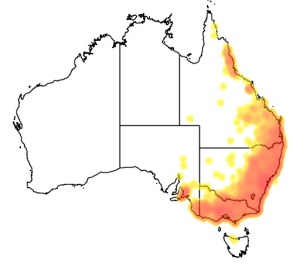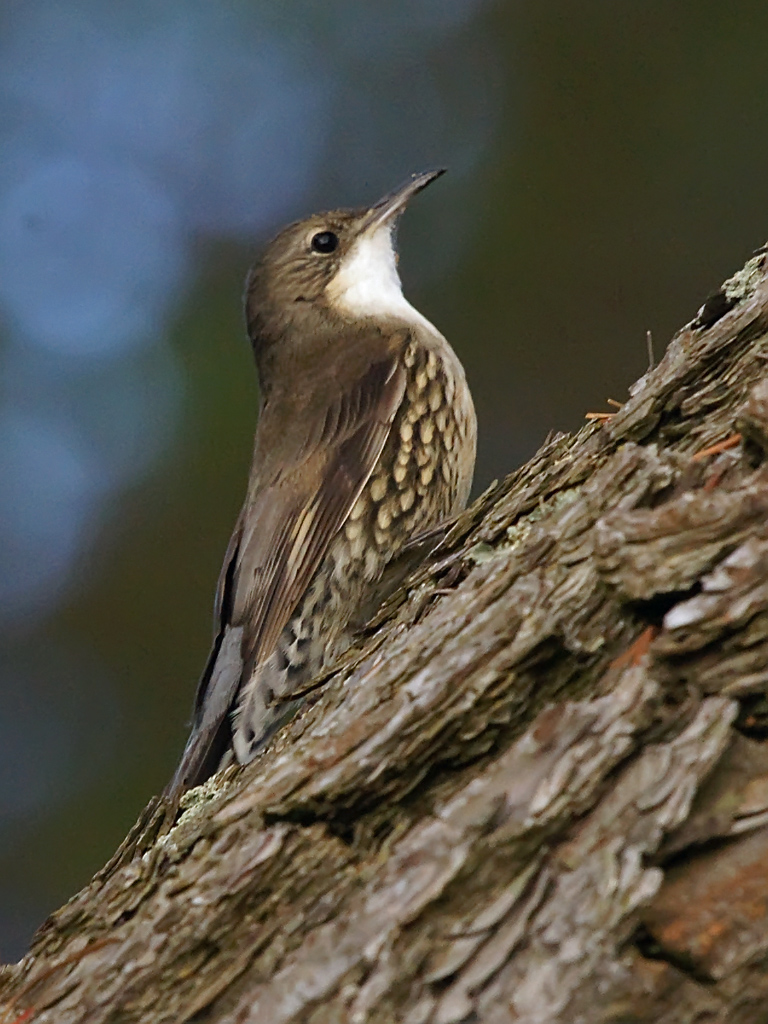
©David Cook: Female White-throated Treecreeper (Cormobates leucophaea) showing the orange spot on the neck which the male doesn't have
Colours
Distinguishing features
It has a white throat and breast and barred dark-brown and white belly and flanks. The upperparts and wings are a dark greyish brown, with a buff patch visible on the wings. Unlike other treecreepers, it does not have a pale eyebrow. The bill and feet are black. The female has a pale orange-brown patch on the cheek. Immature birds have an orange-brown rump and white markings on the scapulars.(Wikipedia)
Size
- From 13 cm to 15 cm (Length of specimen)
Wingspan
- From 19 cm to 26 cm
Synonyms
Distribution

©Atlas of Living Australia: Australian distribution: White-throated Treecreeper (Cormobates leucophaea)
Distribution and habitat preferences
It is found from the Gulf St Vincent in South Australia, through Victoria, and eastern New South Wales and southeastern Queensland, with an area further north from Mount Spec to Cooktown. Wet sclerophyll forest and rainforest is the preferred habitat. (Wikipedia
Audio recordings
Diet
It is predominantly insectivorous, eating mainly ants, although will eat also nectar.It prefers foraging on the rough-barked eucalypt, the Red Stringybark (Eucalyptus macrorhyncha), rather than the smooth barked species, the Inland Scribbly Gum (Eucalyptus rossii). Birds glean (take prey while perched) and peer, as well as drill in dead wood, for insects. (Wikipedia)


